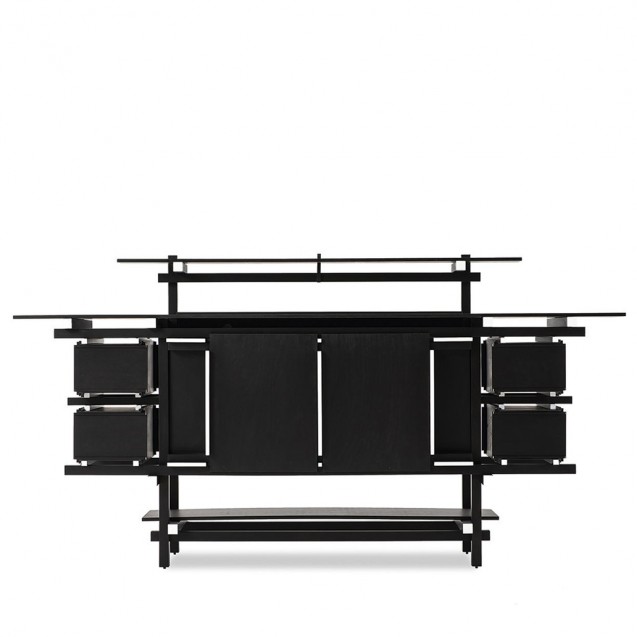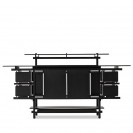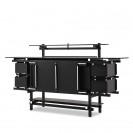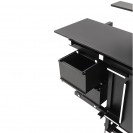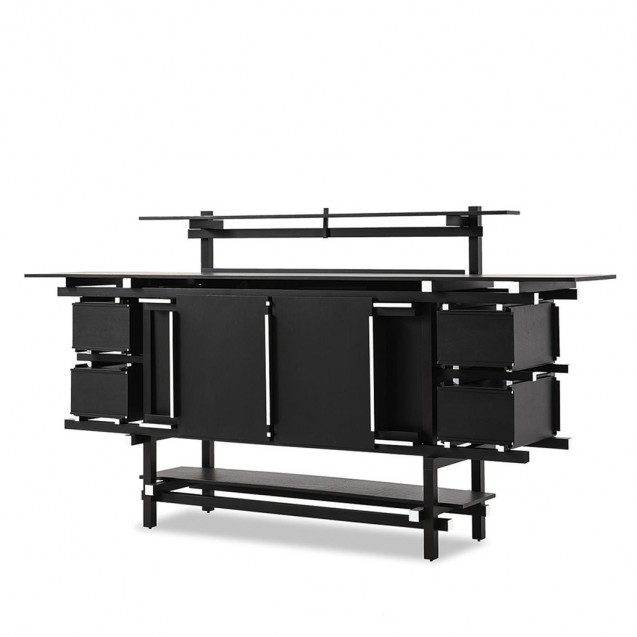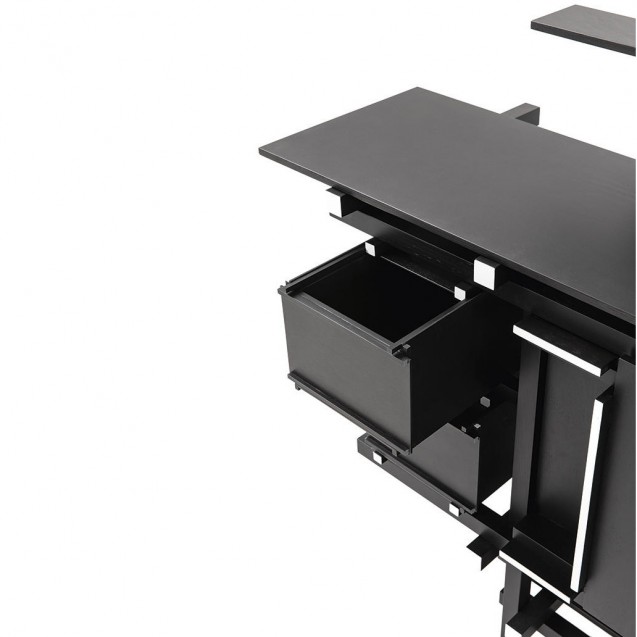636 Elling Buffet Cabinet
Represents, with the Red and
Blue, the essence of the new spatial concept of neoplasticism. A key benchmark
in the establishment of the Modern style, this sideboard, designed in 1919, was
originally used in the model home designed by J.P Oud for Spargen, Rotterdam,
and in various interior design projects, including the project for P.J Elling.
The original model was destroyed in a fire and was only rebuilt under the
supervision of the designer in 1951 for an exhibition at the Stedelijk Museum
in Amsterdam. Today, Cassina produces this storage unit for the first time in
its historic carpentry in Meda, in collaboration with the designer’s heirs. The
pure lines of the structure create a grid based on a structural core to which
surfaces, drawers and storage units are added. The model is influenced by F.L.
Wright and the Anglo-Japanese art of E.W. Godwin, particularly as regards the
accentuated horizontal surfaces, which are offset by the vertical supports
which form a grid from which the storage compartments are hung. The supporting
grid, virtually continuous, has contrasting sections of slats that exalt their
dynamism towards the exterior.
| About Designer | |
|---|---|
Gerrit Thomas Rietveld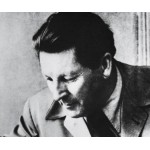 |
Gerrit Thomas Rietveld,
born in Utrecht on 24 June 1888, seems possessed of two personalities, each so
distinct that one might take his work to be that of more than one artist. The
first personality is that seen in the craftsman cabinet-maker working in a
primordial idiom, re-inventing chairs and other furniture as if no one had ever
built them before him and following a structural code all of his own; the
second is that of the architect working with elegant formulas, determined to drive
home the rationalist and neoplastic message in the context of European
architecture. The two activities alternate, overlap, and fuse in a perfect
osmosis unfolding then into a logical sequence. In 1918 Rietveld joined the “De Stijl” movement which had sprung
up around the review of that name founded the year before by Theo van Doesburg.
The group assimilated and translated into ideology certain laws on the dynamic
breakdown of compositions (carrying them to an extreme) that had already been
expressed in painting by the cubists: the “De Stijl” artists also carefully studied the
architectonic lesson taught by the great Frank Lloyd Wright, whose influence
was widely felt in Europe at that time. Collaborating first with
Robert van’t Hoff
and Vilmos Huszar, then with Theo van Doesburg and Cornelius van Eesteren,
Rietveld soon became one of the most distinguished interpreters of the
neoplastic message. Among his most important
works are:
the Schröder house at
Utrecht (1924); the “Row
Houses” at
Utrecht (1931-34); the Dutch pavilion at the Venice Biennial (1954); the
sculpture pavilion in the Rijksmuseum Kröller-Müller at Otterloo and the Van
Gogh Museum in Amsterdam (1955). Out of his equally important furniture,
Cassina has chosen for its own production: the “Red and Blue” (1918), the “Zig-Zag” (1934), the “Schröder 1” (1923), the “Utrecht” (1935) |


